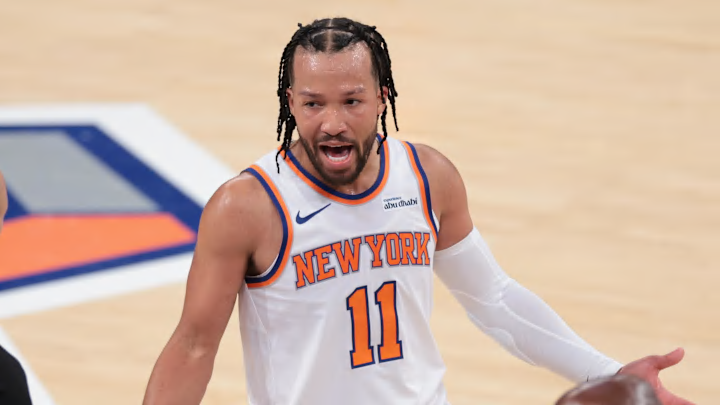Head coach Mike Brown joined the New York Knicks over the offseason, and immediately stressed the importance of making Jalen Brunson’s life easier. The intention was—and is—pure, admirable, and if we’re being honest, necessary. So far, though, the Knicks are failing to actualize Brown’s vision.
Make no bones about it, Brunson’s role has shifted. His time of possession is down from last season, as are the number of dribbles he’s using per touch. His shot quality has also improved. Fueled by a material increase in catch-and-fire opportunities, Brunson’s expected effective field-goal percentage for this season sits at 53. That is up from 51 last year.
These numbers align almost perfectly with the eye test. Brunson isn’t spending nearly as much time on the ball, and is no longer (basically) the only Knick tasked with bringing up the rock and getting everyone into the offense.
Still, results also need to be a metric for ease. And to this point, the results point toward an unsettling, if totally predictable, reality: New York isn’t any less dependent on Brunson than in the past.
The Knicks offense is a sham without Brunson
Between shooting more threes, empowering Mikal Bridges, and working in different reps for Karl-Anthony Towns, the Knicks should be closer to discovering an identity not entirely tethered to their captain. They’re not.
Without Brunson on the court, their offensive rating is plunging by 15.4 points, during which time they are shooting a ghastly 38.3 percent on twos. Karl-Anthony Towns, in particular, has struggled without his co-star.
During the no-Brunson stretches, he is converting just 30.8 percent of his twos, and 25 percent of his threes. These issues are a microcosm of KAT’s season, but that isn’t really a defense. He is the Knicks’ other All-NBA talent. What is the point of paying him more than anyone if he can’t help anchor anything resembling a league-average offense without Brunson?
All the usual “It’s still early” caveats apply. And Towns, to his credit, is playing through an apparently wicked quad strain. But reserving judgement implies New York has the personnel to truly make Brunson’s life easier.
Establishing independence from Brunson may require a personnel shift
The Knicks being waaaay better on offense when their best player is in the game hardly qualifies as breaking news. That’s supposed to be the case for all superstars. New York’s fate will always be tightly tethered to Brunson.
Permanently varying his usage and improving results when he’s catching breathers, though, will require at least one other consistent primary ball-handler. The Knicks do not yet have him.
Tyler Kolek is figuring things out on the fly. Jordan Clarkson is too score-first and erratic to meet the billing. Mikal Bridges isn’t used to handling the same kind of ball pressure, although he’s been largely great as an initiator this year.
Running the offense has never been Deuce McBride’s forte. Towns’ is too much of a mystery-box decision-maker when posting up, or using a live dribble. Malcolm Brogdon retired.
The degree to which New York’s offense reverts when it matters most says all we need to know. Brunson’s fourth-quarter usage rate (37.6) and assist percentage (61.5) would be demonstrably higher than last year’s marks (34.3 and 35.3, respectively).
Things will change between now and the end of the season. The Knicks are better than they’ve shown. But that doesn’t mean they’re better equipped to make Brunson’s life easier. They are most likely, if certainly, not.
